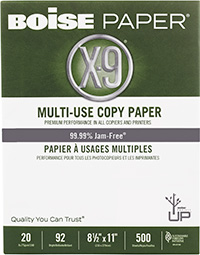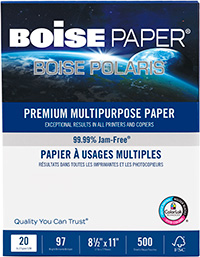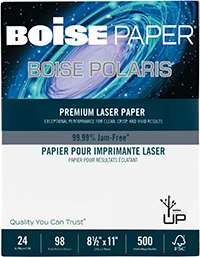
EVERYDAY PAPERS
Trusted results in all copiers and printers Boise® X-9® Multi-Use Copy Paper and Boise® ASPEN® Recycled Multi-Use Copy Paper won’t let your everday paper needs down.
Decades of science, research, and testing have resulted in a dependable and consistent sheet you can trust. Our everyday papers deliver high-performance document production in any home, office, or high-speed print environment.











